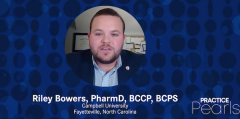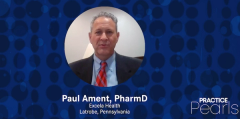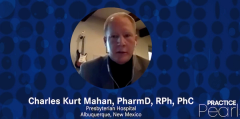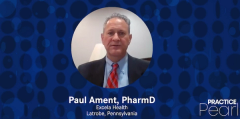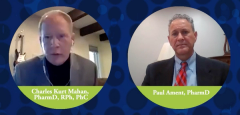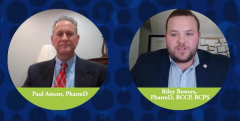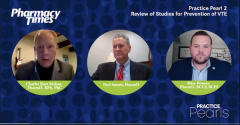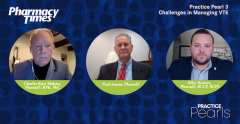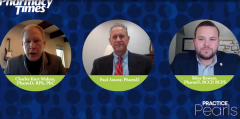
Evolution of Therapies to Prevention of Venous Thromboembolism
Episodes in this series

A panel of experts share how VTE therapy has evolved over time leading to its prevention in many cases.
Charles Kurt Mahan, PharmD, RPh, PhC: It’s interesting how 15 or 20 years ago, we were shifting from heparin to low-molecular-weight heparin, and now there are many parallels in moving from standard-of-care enoxaparin and warfarin to direct oral anticoagulants. That’s a great point. If we could—go ahead.
Riley Bowers, PharmD, BCCP, BCPS: I have something to add. I suppose I have enough seniority to let you know that, when I trained and even when I finished training, all I had available was unfractionated heparin and warfarin. A few years into my practice, enoxaparin came around. It’s been an amazing journey to see how we’ve transitioned from 5 to 7 days of hospitalization for bridging with heparin to warfarin to being able to do this all out of the emergency department with a pill and send these patients home.
Charles Kurt Mahan, PharmD, RPh, PhC: I don’t have the seniority that Paul has, but I want to circle back to something that you mentioned because it’s extremely important. You highlighted the preventability of many of these cases. Over 20% of our VTE [venous thromboembolism] cases, especially the symptomatic cases, can be linked to an instance where it could have been prevented.
In fact, VTE is commonly referred to as the most, or 1 of the most, preventable causes of hospitalization and death. You would think that, because VTE prophylaxis is a joint commission quality measure, we’d be a bit better at avoiding those preventable costs, but we’re not. It provides quite the opportunity, especially for pharmacists, to get in there and contribute at a health system level.
Paul Ament, PharmD: When you look, the medical patient has the highest incidence of thromboembolic complications, more so than with our surgical colleagues. When I throw that number out, the competitive instinct in all of us in health care among our colleagues takes over, so they seem to want to do a better job with making sure their patients are appropriately prophylaxed.
Charles Kurt Mahan, PharmD, RPh, PhC: I agree. With anywhere from 500,000 to 1 million cases of VTE occurring a year depending on the reference, prevention, prevention, prevention is the key. Once you get into that cycle of having a clot, the recurrence rate can be 30% to 50%. If we can avoid patients having the first clot, it keeps them out of a lot of other risks such as bleeding, issues with anticoagulation, and issues with hospitalization infection rates of 4% any time you get admitted to a hospital. These are great points. These are highly preventable: 30% to 40%. There are actually some data saying that, of these VTE, 75% of our VTE is really medical, as Dr Ament mentioned.
Newsletter
Stay informed on drug updates, treatment guidelines, and pharmacy practice trends—subscribe to Pharmacy Times for weekly clinical insights.


